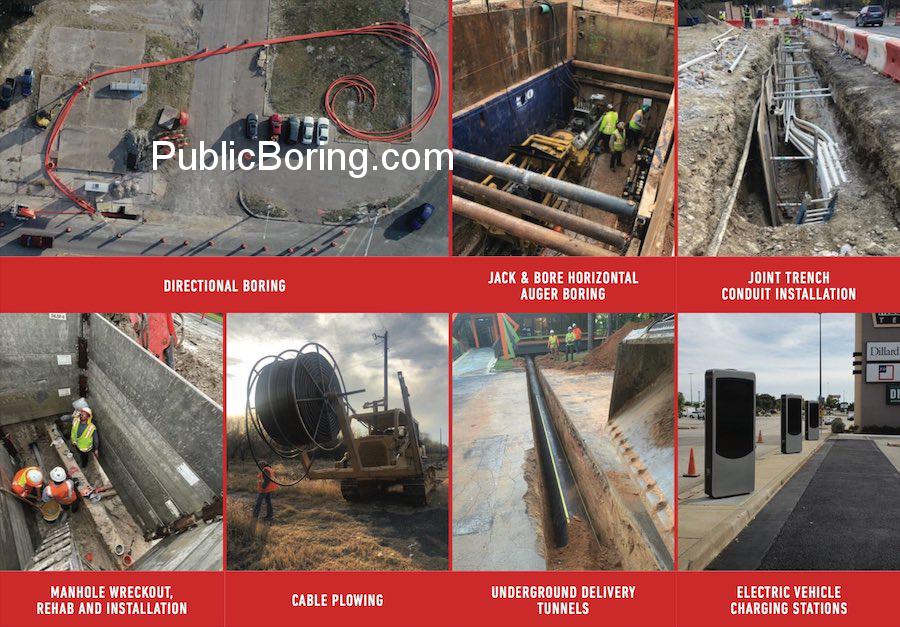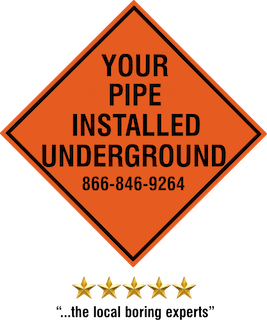Underground Boring: A Comprehensive Overview of Processes and Services
Underground boring is a specialized method utilized to install infrastructure beneath the ground without disturbing the surface above. Here’s a deep dive into the steps and services involved in underground boring using the provided terms:
- Planning and Evaluation:
- Engaging Expertise: Companies, whether local LLCs or large corporations, offer underground boring services. It’s essential to choose the best company or professionals to ensure quality work.
- Site Assessment: Before beginning, experts will determine if the area is boreable. Hard rock terrains may require specialized equipment and techniques compared to softer areas.
- Government & Regulatory Compliance: Necessary approvals, especially when interacting with highways, interstates, railroads, or military zones, are vital to secure before starting any work.
- Preliminary Groundwork:
-
- Excavation: This involves removing soil to prepare the starting point for the boring process. Techniques might include hand digging or using larger excavation machinery, depending on the project’s scope.
- Site Development: Proper construction site development ensures smooth operations, safety, and efficiency during the boring process.
- Boring Techniques & Procedures:
-
- Trenchless Boring: This method, including techniques like jack and bore, is ideal for minimizing surface disruption. It’s especially beneficial in urban areas or where existing infrastructure is present.
- Horizontal Directional Drilling (HDD): Also known as horizontal boring, HDD is a method that allows for the installation of conduits or ductbanks in a guided, horizontal manner.
- Slick Bores: These provide smoother operations, especially in challenging terrains or hard rock conditions.
- Integration of Utilities:
-
- Ductbank Installation: Ductbanks are crucial to organize and protect underground utilities. The ductbank work involves placing electrical conduits, fiber lines, and other essential services.
- Utility Services Integration: This can include electrical lines, fiber boring for telecommunication services like FTTH, and even infrastructure for EV charger stations.
- Collaborative Tasks:
-
- Joint Trenching: If the underground space serves multiple utilities, joint trenching provides a shared solution, optimizing space and functionality.
- Engaging Subcontractors: Often, specialized tasks such as specific utility installations are outsourced to expert subcontractors for the best outcomes.
- Safety & Contingency Measures:
-
- Emergency Protocols: Due to the inherent risks of underground work, emergency preparations are essential. Rescue teams and measures, especially when working near busy roads or railroads, must be on standby.
- Water Management: Wet conditions or unforeseen water ingress may lead to slurry formation. Proper mechanisms should be in place to manage this to prevent hindrances or safety issues.
- Final Steps & Surface Restoration:
-
- Manhole Installation: Strategically placed manholes ensure future access and maintenance possibilities. Manhole wreckouts, if any, are addressed and rehabilitated.
- Restoration: Once boring is completed, the disturbed landscape or surface areas are restored to minimize environmental and aesthetic impact.
- Post-Boring Services & Maintenance:
-
- Regular Check-ups: Service providers often offer routine inspections, maintenance, and even upgrades to ensure the durability and functionality of the installed infrastructure.
Underground boring represents a blend of precision, technical skill, and meticulous planning. The ability to lay infrastructure without significant disruption to the surface above makes it a preferred choice in today’s urbanized environments. Through collaborations with industry pros and using both traditional and modern techniques, underground boring addresses various infrastructural challenges


